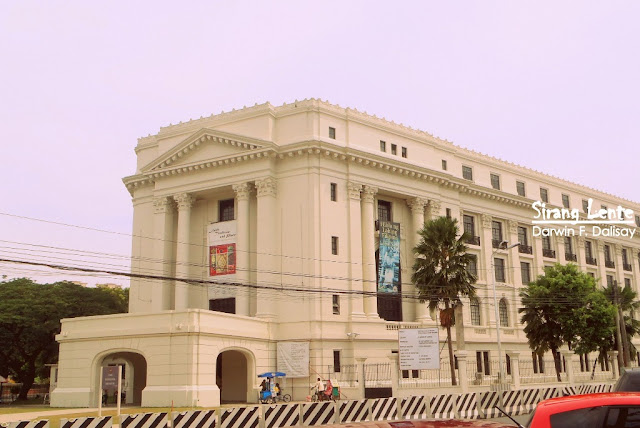
I have been dreaming of visiting the Philippine National Museum since high school, but in 2015, that dream came into reality as they offered free admission for the whole month of October. I spent the whole day inside these historical buildings, from the Marikina Shoe Museum to the Museum of the Filipino People building.
 |
| Philippine National Museum facing Luneta Park. |
The edifice, which now forms part of the National Museum complex, was formerly referred to as the Finance Building, which had previously been occupied by the Department of Finance. It was built in 1940 and is principally credited to the architect Antonio Toledo. Toledo was with the Bureau of Public Works, the agency tasked with constructing Manila’s government structures under the American Colonial regime. In setting up its structures, the Bureau was influenced by the city plan devised around 1906 by Daniel Burnham. Courtesy: Philippine National Museum









 |
| A photo of Manunggul Jar. |
This jar was discovered in the Neolithic burial site in Manunggul Cave of Tabon, Lipuun Point, Palawan. It was used as a coffin in a primitive way of burial in the Philippines.

Speaking of burial discoveries, the Philippine National Museum also houses a lot of burial jars and wood coffins (like the photo above). The skull-like artifacts are earthenware handcrafted in older ways by the ancient Filipinos. These items were discovered in different parts of the country.

 |
| Photo of oldest burial cloth from Banton, Romblon. |


Philippine National Museum also has items from the south; like the Sarimanok and Kulintang. Even in this generation, these musical instruments are still part of their cultural presentations, events and festival.

One of the highlights of the building is the Baybayin or the ancient and traditional scripts of the Philippines. A lot of artifacts, like books and jars were displayed for reference. I am now planning to visit the 3000-year-old petroglyphs located in Angono, Rizal.

The Philippines is composed of more than 7,000 islands and with that factor, this country bears not only the heritage and historical sites but also archeological factors like these preserved butterflies, bugs and other animals - a proof that we have everything.

I was inside the Philippine National Museum for more than three hours. The whole time I was there, my mind was amazed by the artifacts, photos, and history, just like the staircases and the building walls (photo above). This year, in the same month, I'll make sure to visit this huge museum to see new discoveries.
Important Things You Need to Know:
- Location/Address: Rizal Park
- Museum Hours: Opens at 9AM to 6PM, Tuesday to Sundays
- Contact Number: (02) 8298 1100
- Entrance Fee: Free
Click Helpful Links Below:
National Museum of Natural HistoryNational Museum of Fine Arts
Rizal Shrine, Dapitan
Butuan National Museum
Sulu Museum
